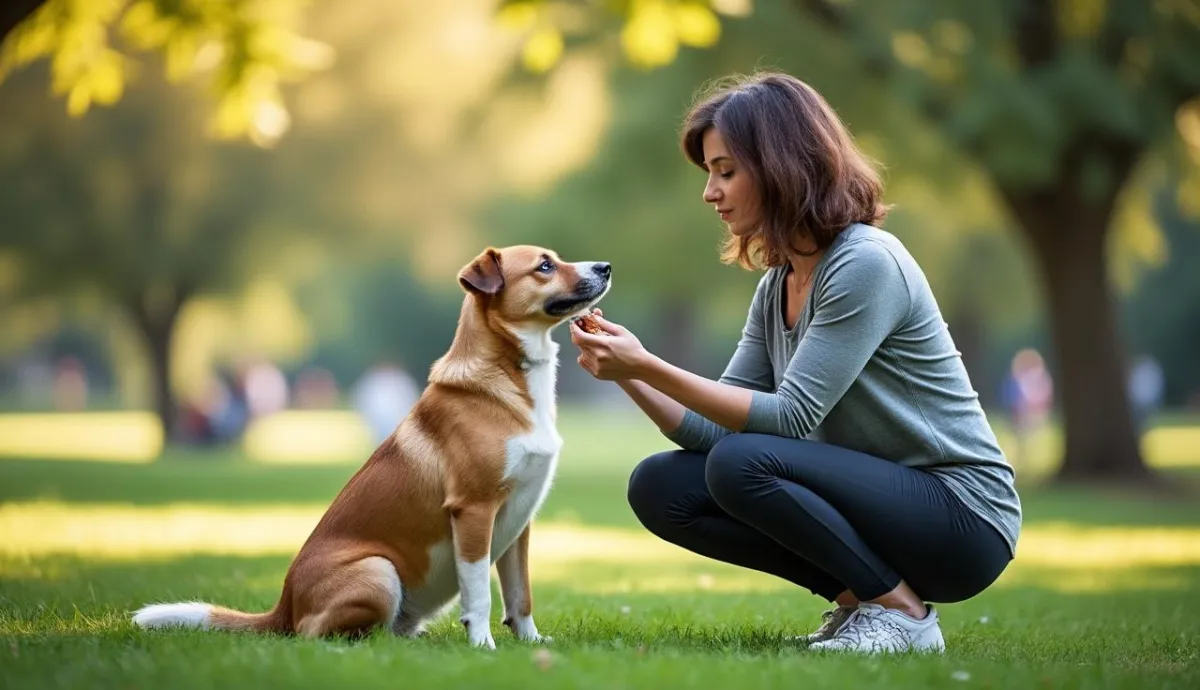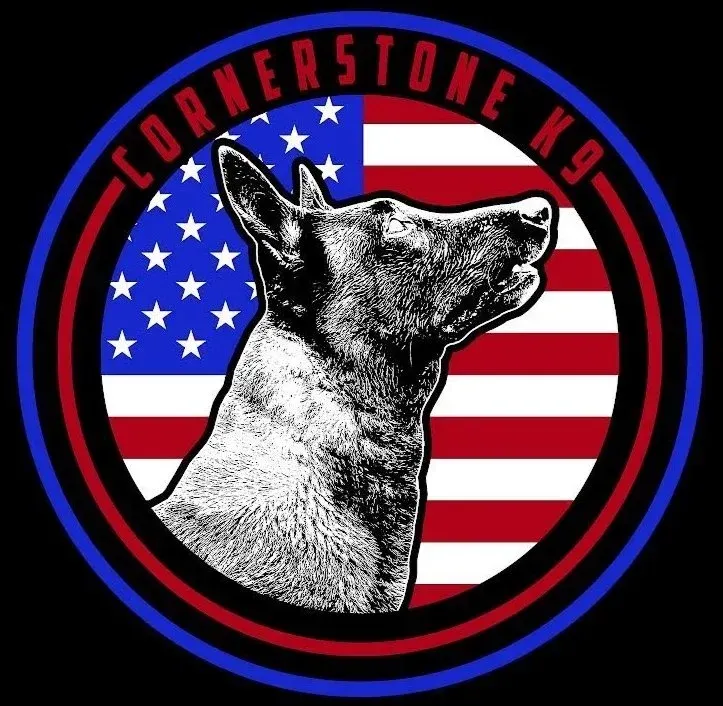
How to Train Aggression Out of a Dog
Many dog owners wonder if aggression can be trained out of their dog completely. The short answer is no - but there's good news.
Let me be crystal clear about something:
While we can't eliminate aggression entirely, we can definitely manage and reduce it through proper training. True aggression isn't the same as being reactive. Aggressive dogs show serious threatening behaviors like biting or lunging, while reactive dogs mainly bark or pull at triggers.
Before starting any training, it's super important to understand why your dog is aggressive. Is it fear? Protection? Resource guarding? Each cause needs a different approach.
Remember, working with an aggressive dog takes time and patience. You'll need to keep everyone safe while training, including yourself and your dog. Setting realistic goals is key - we're aiming for better management, not a complete personality change.
Think of it like helping a scared child feel more confident. With the right support and training, your dog can learn better ways to handle tough situations.
Understanding the Science Behind Dog Aggression
Let me break this down in a way that'll make perfect sense:
Your dog's brain works a lot like yours when it comes to feeling threatened or scared. When your pup shows aggression, it's because specific parts of their brain light up like a Christmas tree. These areas control fear, stress, and protective instincts.
Think of your dog's genes like a recipe book. Some dogs naturally have more "spicy" ingredients that make them more likely to show aggressive behavior. But here's the good news: having these genes doesn't mean your dog is destined to be aggressive.
Hormones play a huge role too. It's like having a bunch of tiny messengers running around your dog's body. When stress hits, these messengers tell your dog to either fight or run away.
The world around your dog shapes their behavior big time. Just like kids learn from their surroundings, dogs pick up cues from their environment that can trigger aggressive responses.
Here's a quick look at stress triggers in dogs:* Loud noises* Unfamiliar people* Other animals* Changes in routine* Confined spaces
Types of Aggression That Can Be Modified
Fear-based aggression is super common. Picture your dog as a scaredy-cat who puts on a tough act because they're afraid. This type usually shows up when dogs feel cornered or unsafe.
Territorial behavior is like having a tiny security guard. Your pup thinks they need to protect their space from "intruders." The good news? This behavior can be reshaped with the right training.
Resource guarding happens when dogs think their stuff might get taken away. It's like when kids don't want to share their favorite toys.
Early socialization is your secret weapon. Think of it as sending your pup to kindergarten - they learn how to play nice with others and handle new situations without freaking out.
Aggression TypeSuccess Rate with TrainingTimeframe for ImprovementFear-based85%3-6 monthsTerritorial75%4-8 monthsResource guarding90%2-4 monthsDominance-related70%6-12 months
Modern Approaches to Aggression Management
Listen up: Getting your dog to stop being aggressive isn't as hard as you might think.
Let's start with what really works. Science-backed training has shown us that dogs respond best to positive rewards, not punishment. Think of it like teaching a kid - they learn better with gold stars than time-outs.
The cool thing about behavioral science is that it helps us understand what's going on in your pup's head. When a dog growls or snaps, they're usually scared or confused. It's like when you jump at a sudden noise - it's just their natural response.
Dogs are a lot like kids in another way - they love knowing what comes next. A solid routine makes them feel safe. Wake up, walk, eat, play, rest - repeat. It's that simple.
Here's what works for most dogs:- Regular exercise times- Set meal schedules- Consistent training sessions- Planned quiet periods
Your dog's space matters too. Smart environment setup can stop problems before they start. Think about rearranging your home like this:
Zone TypePurposeSetup TipsCalm ZoneRest areaQuiet corner, comfy bedPlay ZoneActive timeOpen space, safe toysTraining ZoneLearning spotLow distractions, treats readySafe ZoneRetreat spaceCrate or den area
Making these changes isn't rocket science. Just keep things simple and stay patient. Your furry friend will thank you with better behavior and lots of tail wags.
Creating a Comprehensive Management Plan
Listen up: Getting your dog's aggression under control starts with a solid game plan. Think of it like building a house – you need a strong foundation first.
Let's start with watching and writing things down. Keep a simple diary of when your pup shows aggressive behavior. Note what happened right before, during, and after each incident.
Your safety comes first! Always use a sturdy leash and consider a basket muzzle for training sessions. These aren't punishment tools – they're like wearing a seatbelt when driving.
Here's what you need to track:• When the aggressive behavior happens• What triggers it• How long it lasts• What calms your dog down• Which training methods work best
Bringing in a pro makes a huge difference. A certified dog trainer or animal behaviorist can spot things you might miss and create a custom plan for your furry friend.
Common Triggers vs. Quick Management TipsDoorbell rings → Direct to safe spaceStrangers approach → Use "Look at me"Other dogs → Increase distanceFood bowl touched → Practice sharingTerritory issues → Set clear boundaries
Assessment and Documentation Procedures
Getting started is super simple. Grab a notebook or use your phone to record each incident. Write down the time, place, and what got your pup worked up.
Safety Protocols and Management Tools
Always keep these handy:• Strong, non-retractable leash• Properly fitted collar or harness• Basket muzzle (when needed)• Treat pouch for positive reinforcement• Pet gate for safe spaces
Progress Tracking Methods
Track your wins, no matter how small! Maybe today your dog only barked instead of lunging – that's progress! Keep a simple chart showing good days versus tough ones.
Professional Support Integration
Find a force-free trainer who gets it. They'll teach you amazing techniques and help tweak your plan when needed. Regular check-ins keep you on track and confident.
Remember: Change takes time. Your dog didn't become aggressive overnight, and they won't change overnight either. But with patience and the right plan, you'll see amazing progress!
Beyond Traditional Training: A Holistic Approach
Listen up: Getting rid of dog aggression isn't just about teaching "sit" and "stay."
Think of your dog's behavior like a puzzle. Every piece needs to fit together perfectly.
Your pup needs both physical and mental workouts to stay happy. A tired dog is usually a good dog! Try these quick brain games:
• Hide treats around the house• Teach new tricks weekly• Use puzzle toys during meals• Play "find it" with favorite toys
What your dog eats directly affects how they act. Poor nutrition can make your furry friend cranky and reactive. Feed them high-quality food that's rich in:
NutrientBenefits for BehaviorOmega-3sCalms anxietyL-tryptophanImproves moodB-vitaminsReduces stressMagnesiumPromotes relaxation
Dogs need about 12-14 hours of sleep daily. That's right - more than you! Without enough rest, they get grumpy just like we do.
Building a strong bond means spending quality time together. Pat your dog when they're calm. Talk to them softly. Show them lots of love when they behave well.
The Impact of Human Behavior on Dog Aggression
Here's something wild: Your mood affects your dog's behavior. When you're stressed, your dog feels it too!
If you're nervous about your dog's aggression, they'll pick up on that fear. Stay calm and confident around your pup.
Family life plays a huge role too. Kids running around? Other pets? Everyone needs to follow the same rules with your dog.
Talk to your dog using clear signals. They understand your body language better than words. Use these simple tips:
• Stand tall but relaxed• Speak in a calm voice• Avoid staring contests• Reward good behavior right away
Remember: A happy owner usually means a happy dog. Work on your own stress levels to help your furry friend stay calm too.
Let's be real: managing dog aggression takes time and dedication, but the results are worth it. While we can't completely eliminate aggressive tendencies, we can make huge improvements with the right approach.
Remember, every small step forward is a win. Your dog might not become the neighborhood social butterfly overnight, but that's okay! The goal is progress, not perfection.
Keep tracking those improvements, no matter how tiny they seem. Maybe your dog can now walk past other dogs at 20 feet instead of 40 feet. That's amazing progress!
Stay patient and stick to your training plan. Work with your vet and trainer to keep adjusting as needed. Most importantly, celebrate every bit of progress your dog makes.
With time, patience, and the right support, you can help your dog become calmer and more confident. That's a win for both you and your furry friend!

